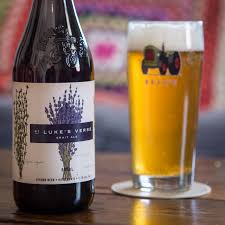 My CBC column last Friday deviated from the usual and looked at the odd beverage that is Gruit. You can listen to the column here.
My CBC column last Friday deviated from the usual and looked at the odd beverage that is Gruit. You can listen to the column here.
Today we generally know Gruit as a beer made with a mixture of herbs and spices and (mostly) without hops. And that is strictly accurate. But seeing it just as a beer with alternative ingredients misses the fascinating history that comes with it. It was one of the more fun research jobs I have engaged in.
The reality is that gruit is an integral part of beer history. It was the first beer quite frankly. Brewers in the early part of the millennium used whatever ingredients they had locally. Universally there is a need to balance the sweetness of the barley malt with some kind of bitter or earthiness. A wide range of herbs were called into service, including rosemary, sage, mugwort, sweet gale, yarrow, rosemary and horehound. Some might also add heather, juniper, caraway, ginger, aniseed.
You can immediately appreciate how those additions would transform the flavour of the beer compared to what we understand today.
Hops mostly likely took over by the 1700s because they proved to be a superior product for beer given their potency, noted bitterness and complementary flavours. However, many other more conspiratorial theories abound, most of which none of us can confirm nor deny.
First the supposed narcotic and alleged aphrodisiac-like qualities of some of gruit’s ingredients drew the ire of both the Catholic and Protestant churches. We can’t really confirm whether consuming mugwort and horehound turns you into a sex maniac, but the middle ages religious types certainly thought so.
Then there were the landed gentry who resented the church’s control over gruit production and offered hops as a secular alternative. However, the most likely explanation is that hops proved to be more effective additions for brewers and thus, over time, gained the advantage both with brewers and consumers.
Still, the orgy story is far more entertaining.
Today, gruit remains a niche product, but a growing one. More and more consumers are appreciating the different flavours you can create when you eschew your traditional hops with other more creative alternatives.
On air, the host, Portia Clark, and I tried a Beau’s St. Luke’s Verse gruit, which is made with rosemary, thyme and lavender. It has a unique earthy and soapy character that makes it unique.
Be prepared to see more gruit in the near future. Maybe not as a mainstay, but I think more and more breweries will turn to alternative herbs to create a one-off beer that stands out.
Welcome back gruit!

December 15, 2017 at 4:44 PM
When we made Monk’s Misery in 2014 at Big Rock Paul had to head to defend our use of mugwort in front of a panel at the CFIA because it was not previously approved for use in beverages. It’s a nice little “beery” category.